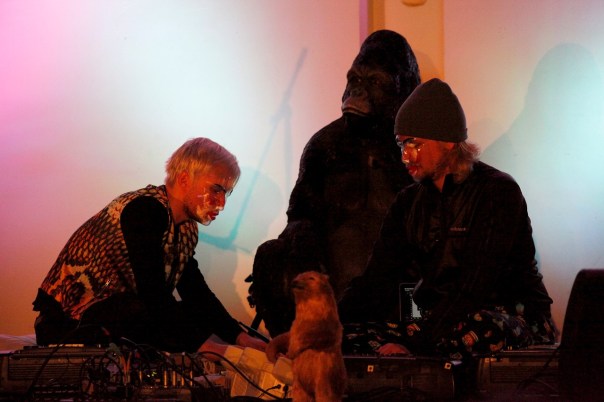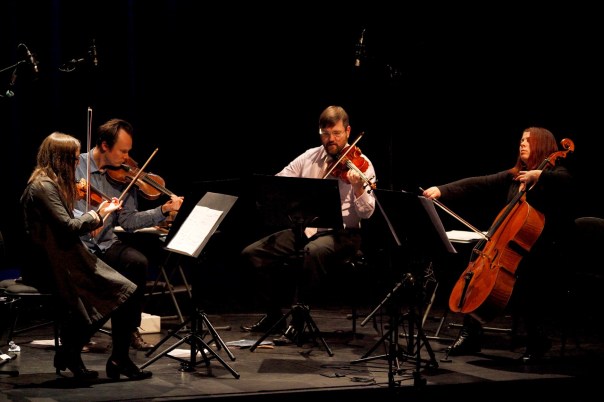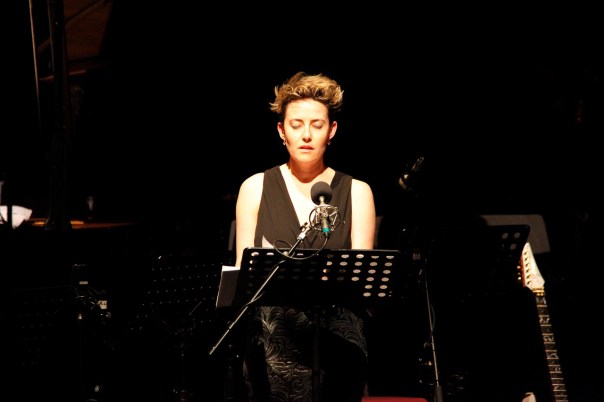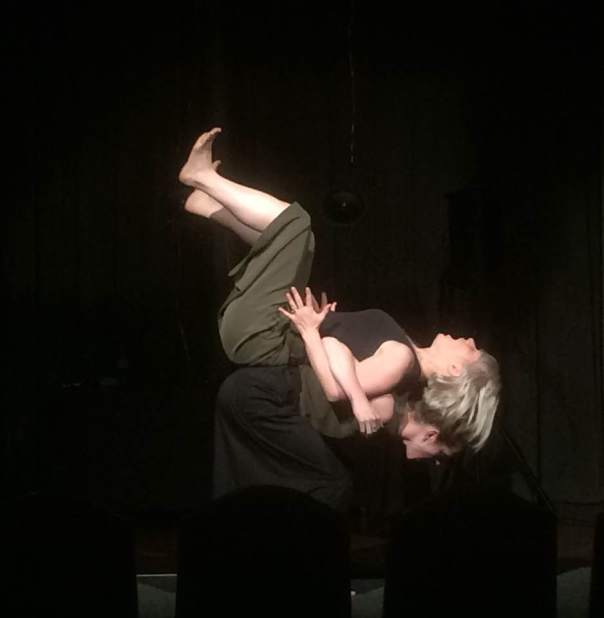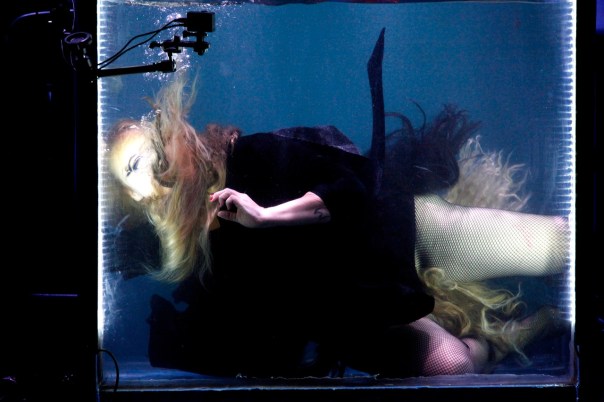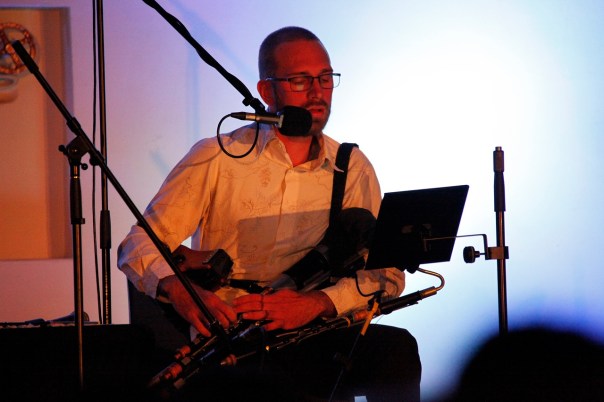Matthew Lorenzon
For over 20 years realtime has been a dedicated space for the documentation, appreciation, and criticism of new music in Australia. Throughout my seven years writing for the magazine and the realtime-supported blog Partial Durations, I have had the privilege of following the work of many musicians as they grow, drop out, drop back in, move overseas, and create the most thrilling music I have ever heard.
realtime editors Keith Gallasch and Virginia Baxter’s contributions to new music in Australia cannot be overstated. One American visitor to the Tura New Music Festival was shocked to hear I had been sent there by a magazine, remarking that “nobody reviews contemporary music in the US because nobody gives a shit.” Well, we do, and Keith and Virginia set the bar high for an aspiring music critic. My first review was of Chamber Made Opera’s first “living room opera” The Itch by Alexander Garsden. Who else would send a reviewer to a living room to hear a contemporary opera by a young composer? Keith made it clear there were to be no nineteenth-century grammatical hangovers, no awkward fluff, no unsubstantiated criticisms, but still an overall and definite point to the review. In a world of distractions, attention can be the greatest gift. Keith and Virginia wouldn’t put down their fine-tooth combs for the next seven years and through their editorial support I have grown immeasurably as a writer.
I continued to write regularly for realtime and in 2013 proposed a side-blog dedicated to contemporary music. I believe my crazy pitch was something like “How about I write more for you for less?” Keith has not passed on his knack of thinking up catchy titles, so I proposed the obscure name of “Partial Durations,” a term drawn from a composer’s sketch that vaguely reflected the blog’s ephemerality. Keith insisted that we could do better, but the next day confessed that he couldn’t think of anything else, so it stuck. I think Partial Durations became an important source of criticism for the contemporary music scene until competing priorities caused the blog to slow almost to a stop this year. A particular highlight of this period was running writers’ workshops at the Tura New Music Festival and the Bendigo International Festival of Exploratory Music. Keith, Virginia, Alistair Noble, and I would mentor a number of emerging writers at each festival, producing reviews at a break-neck pace. Even with tight deadlines Keith and Virginia would take the time—much to the writers’ surprise—of poring over each review word by word. Most of the writers had never had so much attention paid to their writing, and sadly may never again. At all points the ethos of measured criticism (describe, explain, and then if you must, criticise) ensured that participants left these festivals with a greater understanding and appreciation for music. I hope they all experienced the personal artistic growth that comes from suspending judgement long enough to better understand a work.
There are 273 reviews on Partial Durations, that’s 273 small acts of witnessing music change and develop in Australia. These would not have been written without realtime’s support and I am so glad that realtime have offered to include them in their online archive, which they will develop throughout next year.
So what did change? I have seen a brilliant generation of musicians emerge from the VCA, burn brightly and then disperse around the world. I have seen Monash University emerge as a powerhouse of musical exploration. The Aurora Festival came and went, like the aurora itself, over Western Sydney. Tura New Music tirelessly ploughed on in the West and up the coast. In Queensland, Kupka’s Piano led a resurgence in contemporary concert music with a truly ambitious series of concerts. MONA FOMA taught us all how to really enjoy contemporary music. Young composers became numb to the old aesthetic arguments propagated by their teachers at music schools. Complexist or pastoralist, who cares? They’ll both be played side by side at the Cybec competition. The Metropolis Festival carved into the scene before losing its edge, but the Bendigo International Festival of Exploratory Music grew from strength to strength as Australia’s answer to Darmstadt or Huddersfield. Even if critical discourse around this music is in decline, musicians themselves are becoming more critically aware, as testified by the explosion of action around gender equality over the past years.
There are so many lessons to take away from this experiment in music journalism, but a rather pessimistic one is that the internet is an inhospitable medium for careful and considered writing. We have an unhealthy relationship to online content, wanting to read quickly and shallowly. The resulting churn means less time to revise and deepen opinions. As advertisers and government funders crave ever more traffic, the writing must become thinner and cheaper. As the cost of reviewing falls to those who need it most—the musicians—the lines between advertising and honest reviews blur.
That said, the internet has transformed our access to new music for the better. Writers and musicians are now better connected and informed about each others’ work than ever before. Online streaming makes premieres across the world instantly accessible to all. How can we make use of the good while avoiding the bad in this situation? I propose a radical model for “slow criticism” in music writing, one with anonymous authors and subscribers, which is only available in print, and which has an international scope. Anonymity may seem counter-intuitive given that it leads people to unleash their worst natures online, but in a controlled, edited print environment it ensures honesty and collaboration. An anonymous subscriber base, perhaps facilitated by way of crypto-currency, ensures that readership exerts no influence upon the authors. A quarterly print-only publishing schedule is a necessary impediment to fast-food criticism. To research, to explore new ideas, and to think carefully and critically, authors deserve to be paid a decent rate for their work. The content will therefore be dictated in a large part by the subscribers willing to forego speed for quality.
But that’s just a crazy idea. Who would start such a thing? Why reject the immediacy and reach of online content? It is truly devastating to see realtime fold right as they had designed a new website that seemed to speak to the best side of online publishing. The new site casts such a breadth of content immediately before the reader’s eyes, but in its simplicity and elegance encourages them to settle in with an article or two. But why advertise on such a site when you can cast another tile into the infinite advertising soup of a Facebook feed or junk mailbox? Why support an independent, critical publication when a few dollars will buy a string of ingratiating adjectives elsewhere? Ah, realtime, I’m gonna miss ya.

